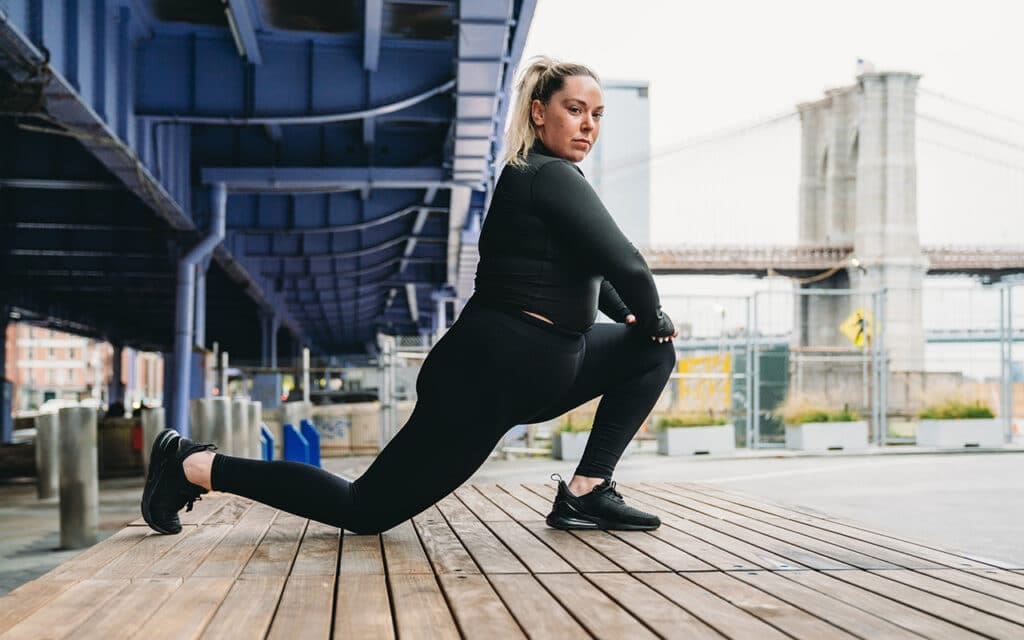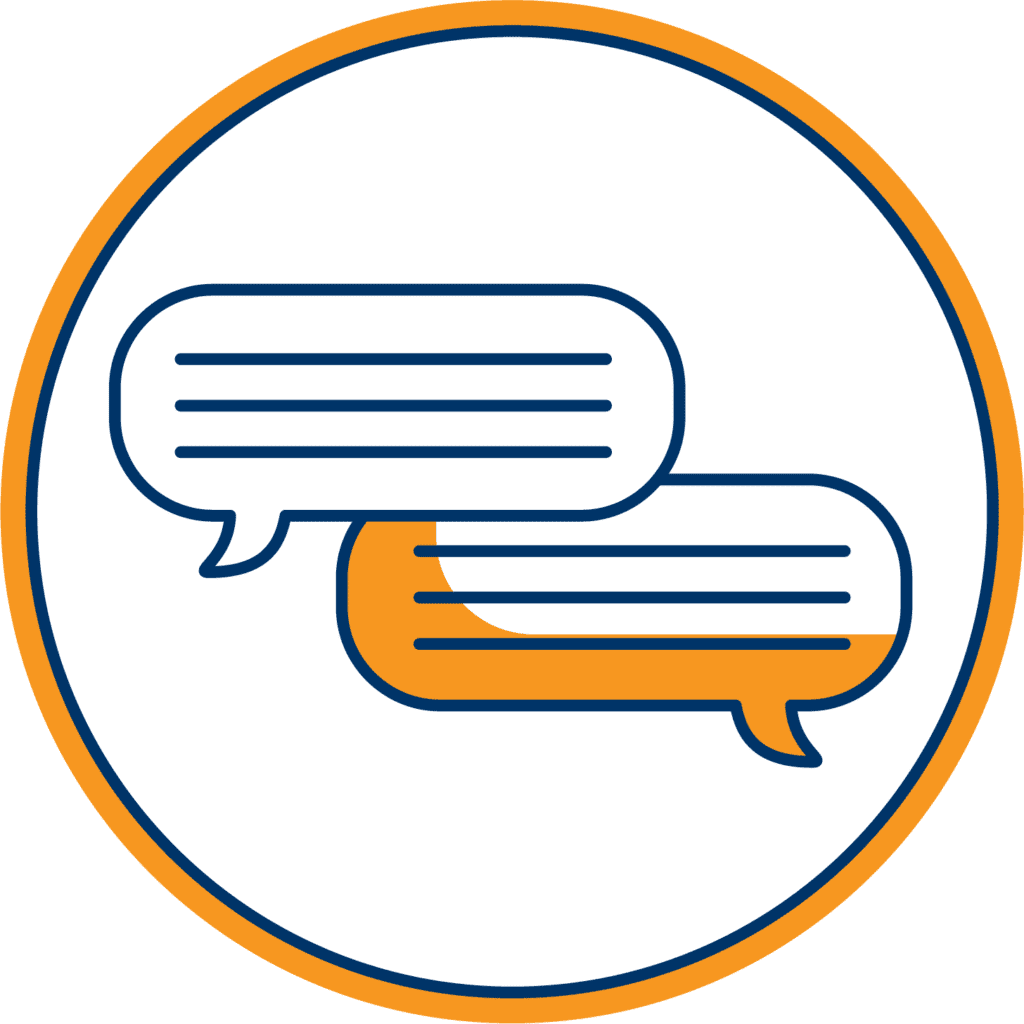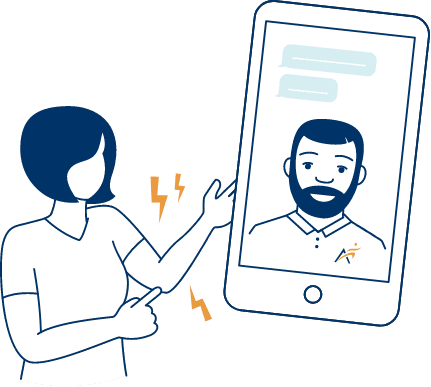- About
Who We Are
Partner With Airrosti
Testimonials
- Locations
Nationwide Care
Our virtual care option, Airrosti Remote Recovery is available nationwide.
Find A Location Nearest You
- Injuries We Treat
- No Cost Assessments
- Virtual Care
- Careers
Our virtual care option, Airrosti Remote Recovery is available nationwide.
(21,000+ reviews on Google across 150+ locations)
The quadriceps are a powerful group of muscles located on the front portion of the thigh. Because they are involved in many movements and connected to two major joints, a quad strain (commonly known as a pulled muscle) can greatly impact your daily life. Learn more about the anatomy and symptoms associated with this common injury with Airrosti’s Ally Jackson, DC.
The quadriceps muscles span the front of the thighs and are often injured because they cross two joints: the hip and the knee. Quad pain can frequently occur in those who participate in sports that involve frequent running or kicking, such as soccer, football, and basketball. Because the quad muscles are involved in supporting much of the body’s movement while upright or in motion, quadriceps strains can often occur.

The quadriceps are particularly active during sprinting, jumping, or kicking. Too much tension can cause the muscle fibers to tear. This can be the result of either excessive force or repetitive motion. This tearing can happen gradually over time due to repetitive motion or quickly when excessive force is placed on the muscle group, such as a rapid acceleration or deceleration, or a sudden change in direction. Additionally, a sudden impact to the area such as a fall can also contribute to a quad strain.
Because the quadriceps muscles span the front of the thigh and are connected to various muscles and tendons at the hips and knees as well, symptoms can vary.
Common symptoms of a quad strain may include:
The estimated recovery time for a quad strain is dependent on the severity of the strain. The clinical grading system for most strains, including quad strains, includes three categories:
Grade 1: Mild
Grade 1 quadriceps strains are characterized by the tearing of a limited number of muscle fibers and are indicated by mild pain and tenderness. Despite these discomforts, individuals may experience zero to minimal loss of strength. However, activities like walking or running might be uncomfortable. This grade is likely to recover in 1 to 2 weeks.
Grade 2: Moderate
Grade 2 quadriceps strains manifest with a moderate level of pain resulting from a significant number of muscle fibers being torn. This grade is also marked by a moderate loss of strength in the affected area and potential for swelling and bruising to occur. Individuals might have trouble bending their knees or straightening their legs, along with challenges in engaging in physical activities due to the strain’s constraints on mobility. A grade 2 strain can take several weeks to recover and heal.
Grade 3: Severe
A Grade 3 strain is the most severe level of injury, characterized by a complete loss of strength. This grade elicits intense pain, accompanied by pronounced swelling and extensive bruising. The strain results in the complete tearing of muscle fibers, causing the muscle to be separated into two pieces. This separation might be visibly evident as a physical dent or gap in the muscle structure. Grade 3 strains can take several months to recover.

For mild to moderate quad strains, the RICE method will likely be recommended by a healthcare provider:
You also may be recommended to take anti-inflammatory medications (NSAIDS) to help reduce pain. For more severe quadriceps strains and tears, surgery may be required alongside physical therapy to help rebuild strength and gain mobility in the affected area.
It is always best to stay one step ahead and take preventative action against injuries. As powerful as they are, the quads are still vulnerable to strain if they are neglected. Some steps you can take to avoid a quad injury include warming up properly before any activity and taking time to cool down and gently stretch your quads after exercise.
Strengthening your quads, hamstrings, and hip flexors can also help reduce your risk of quadriceps injuries, as well as injuries or strain to other areas of the lower body. Stronger muscles are more resistant to stress and can provide more support to your joints during activity.

If conservative and at-home quad strain treatment provides little to no relief, schedule a visit with Airrosti and start your recovery today.
Airrosti can help rapidly relieve your quadriceps pain fast, often in an average of 3 visits (based on patient-reported outcomes). At Airrosti, you will be treated by a Provider who will diagnose your condition or injury, and work to treat the pain directly at the source. Once diagnosed, an individualized treatment plan will be created for you. You’ll also receive education on your injury and resources to continue your recovery at home.
For more information, call us at (800) 404-6050.
Read our Medical Disclaimer here.
Reviewed by Casey Crisp, Doctor of Chiropractic
Disclaimer: Always consult with your doctor before starting any exercise program. If you experience any numbness, tingling or reproduction of your symptoms, please contact your doctor.

I injured my front quad muscle while playing a game of family kickball. I knew what I did as soon as I kicked the ball. Dr. Capri got me all fixed within 3 visits. I had full range of my quad within that 3rd visit and was back to my gym schedule and playing with my family. I highly recommend Airrosti and Dr. Capri for your athletic injury care and treatment. He will be the first doctor I call from now on when I need immediate treatment and management. Thank you, Dr. Capri!
by Sarah Melville
